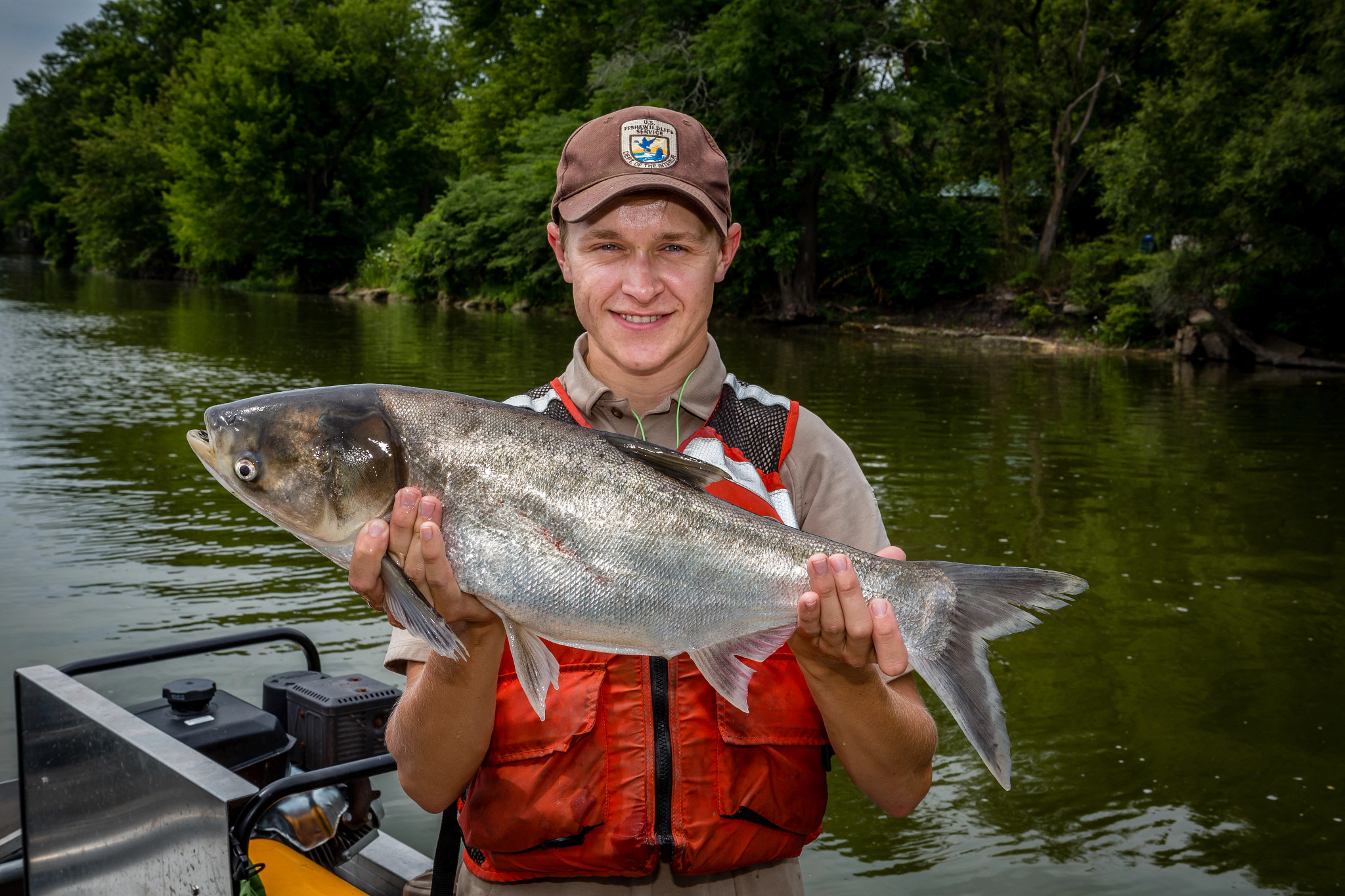Contact: DNR Office of Communications
DNRPress@wisconsin.gov
DNR Working With Multiple Agencies To Remove Invasive Carp From Mississippi River
First Time For New Method In Wisconsin/Minnesota Waters
 The DNR and neighboring state and federal agencies will conduct an intensive invasive carp removal effort in Pool 8 of the Mississippi River near La Crosse beginning April 5.
Photo credit: U.S. Fish and Wildlife Service
The DNR and neighboring state and federal agencies will conduct an intensive invasive carp removal effort in Pool 8 of the Mississippi River near La Crosse beginning April 5.
Photo credit: U.S. Fish and Wildlife Service
MADISON, Wis. – The Wisconsin Department of Natural Resources (DNR) and neighboring state and federal agencies will conduct an intensive invasive carp removal effort in Pool 8 of the Mississippi River near La Crosse beginning April 5. The innovative Modified Unified Method (MUM) combines netting and herding techniques to drive and concentrate invasive carp from a large area of water into a small zone for removal.
This is the first time MUM has been used in Wisconsin or Minnesota waters, including the first time it has been used anywhere across the country as an early detection and rapid response technique. The DNR is working with the Minnesota Department of Natural Resources (MNDNR), which is leading the operation, the U.S. Geological Survey (USGS) and the U.S. Fish and Wildlife Service.
This MUM exercise is part of a response to 39 silver carp and 12 grass carp that were captured in Pool 8 in March 2020. The goal is to remove invasive carp present in Pool 8, curb the potential for invasive carp reproduction and to prevent their establishment in the Upper Mississippi River Basin. The operation will also yield more detailed information about any current invasive carp presence in Pool 8.
“Our expectation is that this innovative and aggressive approach will not only remove invasive carp from this area, but also help develop the technique for early detection and rapid response to any new invasions,” said Carli Wagner, MNDNR Invasive Species Specialist. “Through this highly collaborative joint operation, we’re filling a gap in the toolbox for invasive carp response efforts.”
This thorough search and removal effort will last seven to 10 days. Progressive areas of Pool 8 will be closed for one to three days during this time, temporarily suspending commercial fishing and recreational use of portions of Pool 8. The operation will pause Saturday and Sunday due to typically higher weekend boat traffic.
“We’ve been contacting commercial fishing operations and others who might be affected, with the mutual understanding that this temporary inconvenience will provide long-term benefits to the watershed, native species, commercial and recreational fishing, businesses and others in this part of the Mississippi River,” said Ben Larson, MNDNR Invasive Carp Field Lead.
In the Modified Unified Method developed by the USGS, block nets are used to create compartments or “cells” from which the fish can be driven. The USGS then uses electrofishing boats and boats outfitted with underwater speakers to herd carp from each cell. When a cell is cleared, another net is used to close the cell and prevent the fish from returning. This process is repeated one cell at a time, gradually reducing the area available to the carp and concentrating the fish into a harvest removal area, where a large commercial seine will be used to draw out the congregated fish. Native fish do not seem to respond in the same way, preferring to hide, rather than run, from the sound stimulus.
Five invasive carp previously tagged with acoustic transmitters will complement this effort by increasing effectiveness at targeting fish in Pool 8 and providing insights into their movements and other behaviors.
The DNR and other agencies will report the results when the operation and follow-up analyses are complete.
Do your part to help prevent the spread of invasive aquatic species. Invasive carp captures must be reported to the DNR immediately. If you believe you have captured an invasive carp, please put it on ice and send a picture of the carp to Jordan Weeks, DNR Mississippi River Fisheries Biologist, at Jordan.Weeks@wisconsin.gov or 608-386-0970.
More information about invasive carp is available on the DNR's invasive carp webpage.

